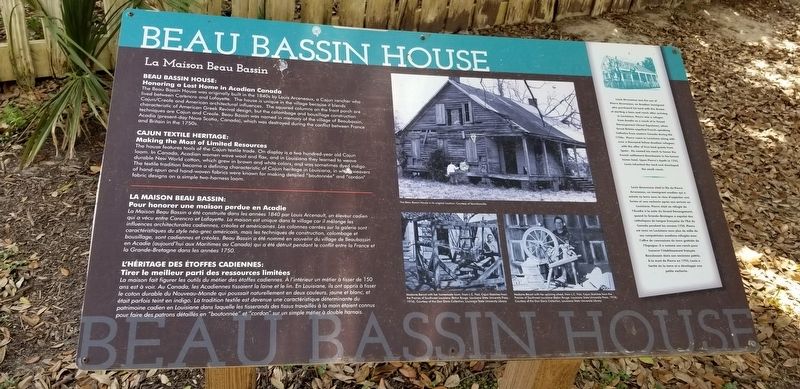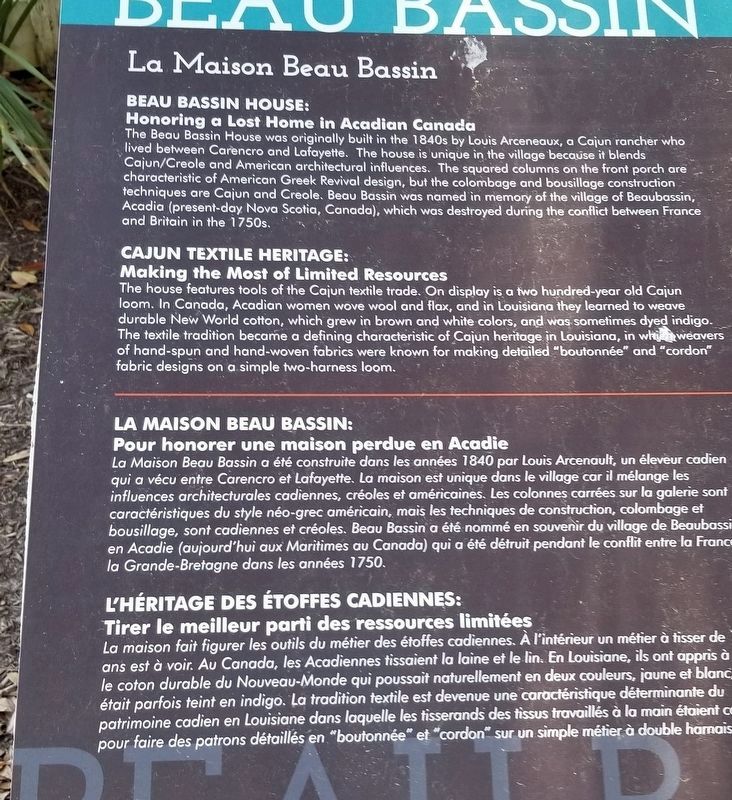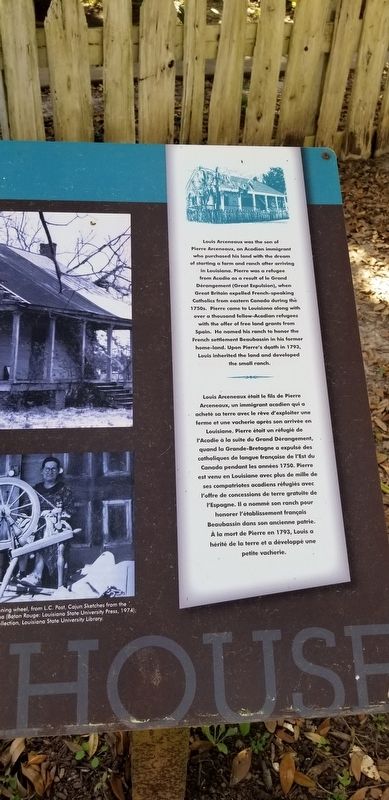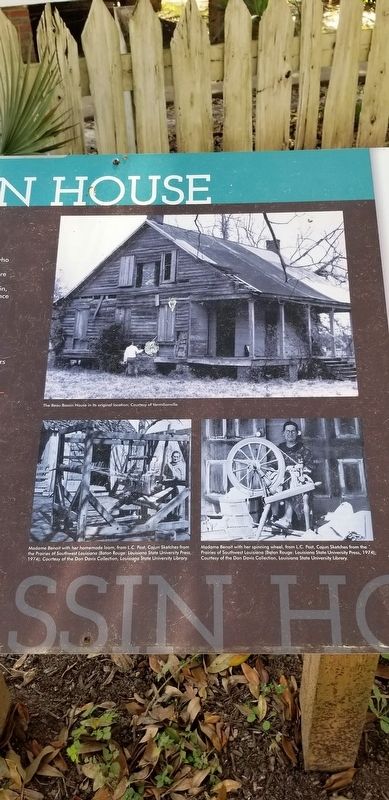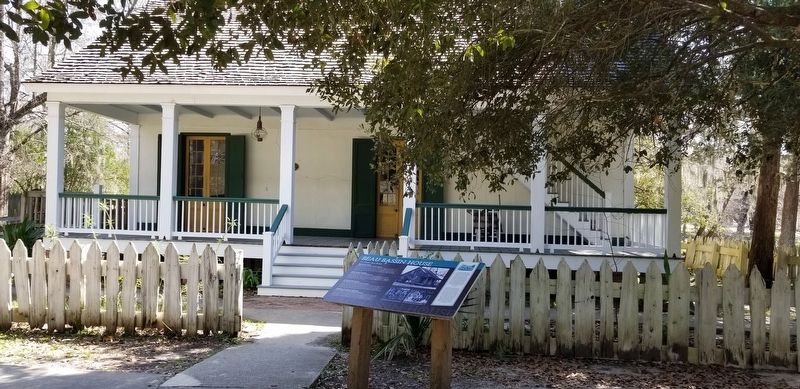Beau Bassin House
La Maison Beau Bassin
Honoring a Lost Home in Acadian Canada
The Beau Bassin House was originally built in the 1840s by Louis Arceneaux, a Cajun rancher who lived between Carencro and Lafayette. The house is unique in the village because it blends Cajun/Creole and American architectural influences. The squared columns on the front porch are characteristic of American Greek Revival design, but the colombage and bousillage construction techniques are Cajun and Creole. Beau Bassin was named in memory of the village of Beaubassin Acadia (present-day Nova Scotia, Canada), which was destroyed during the conflict between France and Britain in the 1750s
CAJUN TEXTILE HERITAGE:
Making the Most of Limited Resources
The house features tools of the Cajun textile trade. On display is a two hundred-year old Cajun loom. In Canada, Acadian women wove wool and flax, and in Louisiana they learned to weave durable New World cotton, which grew in brown and white colors, and was sometimes dyed indigo. The textile tradition became a defining characteristic of Cajun heritage in Louisiana,
L'HERITAGE DES ÉTOFFES CADIENNES:
Pour honorer une maison perdue en Acadie
La Maison Beau Bassin a été construite dans les années 1840 par Louis Arcenault, un éleveur cadien
qui a vécu entre Carencro et Lafayette. La maison est unique dans le village car il mélange les
influences architecturales cadiennes, créoles et américaines. Les colonnes carrées sur la galerie sont
caractéristiques du style néo-grec américain, mais les techniques de construction, colombage et
bousillage, sont cadiennes et créoles. Beau Bassin a été nommé en souvenir du village de Beaubassin
en Acadie (aujourd'hui aux Maritimes au Canada) qui a été détruit pendant le conflit entre la France
la Grande-Bretagne dans les années 1750.
Tirer le meilleur parti des ressources limitées
La maison fait figurer les outils du métier des étoffes cadiennes. À l'intérieur un métier à tisser de ans est à voir. Au Canada, les Acadiennes tissaient la laine et le lin. En Louisiane, ils ont appris à le coton durable du Nouveau-Monde qui poussait naturellement en deux couleurs, jaune et blanc et était parfois teint en indigo. La tradition textile est devenue une caractéristique déterminante du
patrimoine
Sidebar:
Erected by Vermilionville Village.
Topics. This historical marker is listed in these topic lists: Notable Buildings • Settlements & Settlers.
Location. 30° 12.912′ N, 91° 59.711′ W. Marker is in Lafayette, Louisiana, in Lafayette Parish. Marker can be reached from Fisher Road. Touch for map. Marker is at or near this postal address: 300 Fisher Road, Lafayette LA 70508, United States of America. Touch for directions.
Other nearby markers. At least 8 other markers are within walking distance of this marker. School House (within shouting distance of this marker); Bayou Vermilion District (within shouting distance of this marker); Mouton House (within shouting distance of this marker); Mouton Kitchen (within shouting distance of this marker); Historic Village Map (within shouting distance of this marker); Vermilionville Historical Timeline (within shouting distance of this marker); a different marker also named Vermilionville Historical Timeline (within shouting distance of this marker); The Forge (within shouting distance of this marker). Touch for a list and map of all markers in Lafayette.
More about this marker. Located on the grounds of the Vermilionville Living History and Folk Life Park. Admission is required.
Credits. This page was last revised on January 26, 2024. It was originally submitted on March 21, 2019, by Cajun Scrambler of Assumption, Louisiana. This page has been viewed 793 times since then and 61 times this year. Photos: 1, 2, 3, 4, 5. submitted on March 21, 2019.
